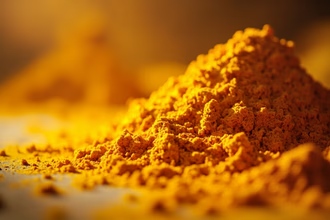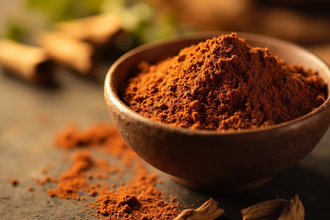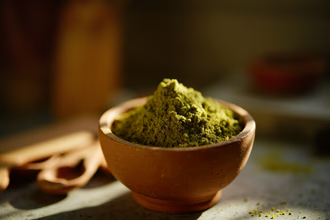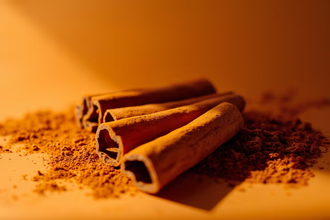Turmeric powder, derived from the root of the Curcuma longa plant, is a spice celebrated across the globe for both its culinary applications and potential health benefits. With its golden color and slightly earthy flavor, turmeric has been a staple in various cuisines for centuries. VH Global Export specializes in sourcing premium-quality spices, including turmeric powder, bringing the best of India's agricultural products to your table.
From adding depth to curries and stews to lending its distinctive hue to rice dishes, turmeric is a versatile ingredient in the kitchen. Beyond its culinary uses, turmeric has a long history in traditional medicine, particularly in Ayurveda, where it is valued for its potential anti-inflammatory and antioxidant properties. This article explores the origins, uses, and potential benefits of turmeric powder, shedding light on why it continues to be a beloved spice worldwide.
Key Takeaways
- Turmeric powder, derived from the rhizomes of the Curcuma longa plant, has been used for centuries in Indian cuisine and traditional medicine.
- Curcumin, the active compound in turmeric, is associated with potential health benefits, including anti-inflammatory and antioxidant properties, though its bioavailability is limited.
- Turmeric powder is a versatile culinary ingredient, adding color and flavor to dishes across various cuisines, particularly in Indian, Middle Eastern, and Southeast Asian cooking.
- To maximize curcumin absorption, turmeric should be paired with black pepper and healthy fats.
- High-quality turmeric powder has a deep yellow-orange color and an earthy aroma, and should be stored in an airtight container in a cool, dark place to maintain freshness.
Table of Contents
Introduction to Turmeric Powder

Turmeric powder, with its striking golden color, has a rich history [1]. Originating in India, this spice has been used for centuries in both cooking and traditional medicine [1]. Its presence is significant in various culinary traditions, adding both color and a distinctive flavor to dishes [1].
The key active compound in turmeric is curcumin [1]. This compound is responsible for many of the potential health benefits associated with turmeric, which will be discussed later in this article.
This article aims to provide a comprehensive overview of turmeric powder, exploring its origins, culinary and medicinal uses, and potential health benefits.
VH Global Export is a provider of high-quality spices, sourcing premium agro-products from the heart of India, including turmeric [2].
The Origins and Cultivation of Turmeric
Turmeric primarily originates from India [1]. The turmeric plant, a member of the ginger family, requires a specific growth cycle to produce the spice [1].
Traditional cultivation methods involve careful planting and tending to the rhizomes, the underground stems from which turmeric is derived. Harvesting is typically done by hand [1]. Modern agricultural practices are also employed to increase yield and efficiency.
Certain regions in India are known for producing high-quality turmeric due to their favorable soil and climate conditions [2]. The quality of the soil and the specific climate play vital roles in the successful cultivation of turmeric [1].
VH Global Export is committed to sourcing turmeric from the best agricultural regions in India, guaranteeing a premium-quality spice [2].
Geographical Origins and History
Turmeric's origins can be traced back to ancient India [1]. It holds historical importance in Indian culture, medicine, and cuisine [1].
Historically, turmeric has been used in traditional ceremonies and as a natural dye, highlighting its cultural significance. Key regions in India served as the starting point for turmeric cultivation [1].
VH Global Export's commitment to sourcing authentic Indian spices is rooted in this rich history [2].
The Turmeric Plant: A Botanical Overview
The turmeric plant, scientifically known as Curcuma longa, is a rhizomatous herbaceous perennial plant belonging to the ginger family, Zingiberaceae [1].
Botanically, the plant features well-developed rhizomes, which are the underground stems that constitute the spice. It also has large, oblong leaves and can produce pale yellow flowers [1].
The growth cycle of turmeric involves planting the rhizomes, which then sprout and develop into the plant. Harvesting typically occurs after about 7-10 months, when the rhizomes are mature [1]. Ideal growing conditions include a warm, humid climate, well-drained soil rich in organic matter, and plenty of sunlight [1].
Cultivation and Harvesting Techniques
Turmeric cultivation involves both traditional and modern methods. Planting typically occurs during the monsoon season, with farmers carefully placing rhizomes in prepared beds [1]. Irrigating the crops is important, and fertilization is done using organic or chemical fertilizers [1].
Harvesting techniques vary across different regions of India. The timing of the harvest is crucial, typically occurring when the leaves begin to turn yellow and dry [1]. The rhizomes are then extracted from the soil, often by hand, and cleaned [1].
Some farms employ sustainable or organic farming practices, avoiding synthetic pesticides and fertilizers. VH Global Export is dedicated to sourcing from farms that employ responsible agricultural practices [2].
Culinary Uses of Turmeric Powder

Turmeric powder finds diverse culinary applications across the globe [1]. It is a key ingredient in many dishes and cuisines, adding both color and flavor.
In Indian cuisine, turmeric is a staple in curries, lending its signature golden hue and earthy flavor [1]. Middle Eastern tagines often incorporate turmeric for its warm notes, while Southeast Asian stir-fries benefit from its subtle bitterness [1].
The flavor profile of turmeric is often described as warm, earthy, and slightly bitter. It improves dishes by adding depth and complexity.
To best incorporate turmeric powder into cooking, consider blooming it in oil to release its flavor and color. This involves gently heating the turmeric in oil before adding other ingredients.
Flavor pairings that work well with turmeric include black pepper, which can improve the bioavailability of curcumin, as well as ginger, garlic, and cumin [1].
Turmeric in Indian Cuisine
Turmeric powder plays a central role in Indian cooking [1]. It is used extensively in various curries, dals, and vegetable dishes, adding its distinctive color and flavor.
Regional variations in turmeric usage exist across India, with some regions favoring it more in specific dishes. For example, South Indian cuisine often uses turmeric in sambar, while North Indian cuisine incorporates it into dishes like butter chicken and chana masala [1].
Turmeric contributes to the color, flavor, and aroma of these dishes, providing a warm, earthy note and a bright yellow hue.
When using turmeric in traditional Indian recipes, it is often added early in the cooking process to allow its flavors to meld with the other ingredients. Blooming it in ghee or oil is also a common practice to improve its flavor [1].
Global Culinary Applications of Turmeric
Beyond Indian cuisine, turmeric powder is used in various culinary traditions worldwide [1]. Its versatility allows it to be incorporated into a range of dishes, each with its own unique flavor profile.
In Middle Eastern cuisine, turmeric is often found in Moroccan tagines, adding warmth and color to the stew. Southeast Asian cuisines, such as Thai, use turmeric in curries, providing an earthy base note [1]. Latin American rice dishes also sometimes include turmeric, lending a subtle flavor and yellow tint [1].
The ways turmeric is used vary across culinary traditions. In some cuisines, it is used sparingly as a subtle flavoring agent, while in others, it is a dominant spice that defines the dish [1].
Tips and Techniques for Cooking with Turmeric
To use turmeric powder effectively in cooking, consider a few practical tips. The best way to incorporate turmeric depends on the dish; for curries, add it early to allow the flavors to meld [1].
Blooming turmeric in oil or ghee is important to improve its flavor and color. Gently heat the turmeric in fat before adding other ingredients [1].
Turmeric pairs well with spices like cumin, coriander, ginger, and black pepper. Black pepper, in particular, can improve the bioavailability of curcumin [1].
Avoid common mistakes such as using too much turmeric, which can result in a bitter taste, or burning it, which can also affect the flavor negatively.
Store turmeric powder in a cool, dark, and dry place to maintain its freshness and potency [1]. An airtight container is helpful.
Potential Health Benefits of Turmeric and Curcumin
Turmeric powder has potential health benefits, largely attributed to its active compound, curcumin [1]. Current scientific research suggests that curcumin possesses anti-inflammatory and antioxidant properties [1]. However, more research is needed to confirm these benefits.
Some studies suggest potential benefits such as arthritis relief, improved heart health, and cognitive function [1]. However, these findings are preliminary and require further investigation.
One challenge with curcumin is its low bioavailability, meaning the body doesn't absorb it well. Pairing turmeric with black pepper can improve curcumin absorption [1].
While the potential health benefits of turmeric and curcumin are promising, it's crucial to maintain a balanced perspective, acknowledging both the potential and the limitations of current research.
Curcumin: The Active Compound
Curcumin is the primary active compound in turmeric, believed to be responsible for many of its potential health benefits [1].
Chemically, curcumin is a diarylheptanoid, giving it unique properties. At a molecular level, curcumin interacts with various signaling pathways in the body [1].
One of the main challenges with curcumin is its bioavailability and absorption. The body processes and eliminates it rapidly, resulting in low concentrations in the bloodstream [1].
Knowing curcumin's role is important when considering the health effects of turmeric.
Anti-Inflammatory Properties
Scientific evidence suggests that curcumin possesses anti-inflammatory properties [1]. It may help reduce inflammation in the body by modulating various inflammatory pathways [1].
Potential applications for these properties include inflammatory conditions such as arthritis and inflammatory bowel disease. Some studies have explored curcumin's effects on other chronic diseases with an inflammatory component [1].
While these findings are promising, it's important to acknowledge the limitations of current research. More studies and clinical trials are needed to fully understand the extent and efficacy of curcumin's anti-inflammatory effects [1].
Antioxidant Effects and Other Potential Benefits
Curcumin exhibits antioxidant properties, which have potential health implications [1]. It may help protect the body against oxidative stress and free radical damage by neutralizing these harmful molecules [1].
Current research explores other potential benefits of turmeric and curcumin, such as improved heart health and cognitive function. Some studies also investigate its role in cancer prevention [1].
It is important to state that more research is needed to confirm these benefits. The evidence is still preliminary, and further investigation is required to fully understand the scope and effectiveness of these potential benefits [1]. A balanced perspective is needed, acknowledging both the potential and the limitations of the existing research.
Improving Curcumin Bioavailability
Curcumin faces challenges regarding its bioavailability and absorption in the body. The body tends to metabolize and eliminate it quickly, resulting in limited absorption [1].
Strategies for improving curcumin absorption include pairing it with black pepper (piperine). Piperine inhibits enzymes that break down curcumin, allowing more of it to be absorbed [1]. Consuming it with healthy fats can also improve absorption, as curcumin is fat-soluble.
Specialized formulations, such as liposomal curcumin, are designed to improve bioavailability. These formulations encapsulate curcumin in liposomes, which protect it from degradation and improve absorption [1].
To maximize the potential health benefits of turmeric and curcumin, consider these strategies for improved absorption. Scientific studies support the effectiveness of these methods [1].
Choosing and Storing Turmeric Powder

Selecting high-quality turmeric powder involves considering several factors. Look for a deep color and a strong, earthy aroma [1]. The origin of the turmeric can also influence its quality.
Turmeric powder differs from fresh turmeric root in terms of flavor intensity and application. Powdered turmeric is more concentrated and convenient for everyday use.
Proper storage is important to maintain freshness and potency. Store turmeric powder in an airtight container in a cool, dark place [1]. Checking the expiration date is also important.
VH Global Export is a trusted source of premium-quality turmeric powder, guaranteeing you receive a high-quality spice [2].
Identifying High-Quality Turmeric Powder
Identifying high-quality turmeric powder involves assessing its color, aroma, and texture. The color should be a deep, rich yellow-orange, indicating a high concentration of curcumin [1]. Consistency in color is also important.
The ideal aroma of fresh turmeric powder is earthy and slightly pungent. A weak or musty smell may indicate that the turmeric is old or of low quality [1].
Particle size and texture should be fine and consistent. Avoid turmeric powder that feels gritty or contains large particles. Signs of adulteration or low-quality turmeric may include a dull color, weak aroma, or the presence of artificial dyes [1].
VH Global Export provides consistently high-quality turmeric powder, guaranteeing a premium spice for your culinary needs [2].
Turmeric Powder vs. Fresh Turmeric Root
Turmeric powder and fresh turmeric root offer different culinary experiences. Fresh turmeric root has a more subtle, earthy flavor, while turmeric powder is more concentrated and intense [1].
Fresh turmeric offers a unique flavor and can be used in juices and teas, but it requires peeling and grating. Turmeric powder is convenient and readily available, making it versatile for everyday use [1].
To convert between the two in recipes, a general guideline is to use about one teaspoon of turmeric powder for every inch of fresh turmeric root. When selecting fresh turmeric root, look for firm rhizomes with an orange color and no blemishes [1].
Proper Storage Techniques to Maximize Freshness
To maintain the freshness, potency, and flavor of turmeric powder, proper storage is important. Store it in an airtight container to prevent exposure to air and moisture [1].
Cool temperatures are ideal, so avoid storing turmeric powder near heat sources. Dark storage conditions are also important, as light can degrade the spice over time [1].
Exposure to air, light, and heat can diminish the quality of turmeric powder, reducing its flavor and health benefits. The optimal storage duration for turmeric powder is generally around 2-3 years, but it's best to check the expiration date and replace it as needed [1].
Conclusion: Embracing the Golden Spice
This article explored the versatility and potential benefits of turmeric powder. From its culinary uses to its role in traditional medicine, turmeric has a rich history and diverse applications [1].
Readers are encouraged to explore the various uses of turmeric powder in their own cooking and wellness routines.
VH Global Export remains committed to providing high-quality spices, including turmeric powder, sourced directly from India [2]. Appreciate this 'golden spice' and its contribution to both flavor and well-being.
Frequently Asked Questions
- What are the primary health benefits associated with turmeric powder?
- Turmeric powder is known for its active compound, curcumin, which has potent anti-inflammatory and antioxidant properties. Research suggests it may help alleviate symptoms of arthritis, improve digestive health, enhance brain function, and reduce the risk of chronic diseases such as heart disease and cancer. However, more studies are needed to confirm these effects definitively.
- How can I incorporate turmeric powder into my diet?
- Turmeric powder can be added to various dishes for flavor and color. It works well in curries, soups, rice dishes, and smoothies. You can also create a turmeric tea or latte by mixing it with warm milk or water. To enhance absorption of curcumin, it’s recommended to consume turmeric with black pepper, which increases its bioavailability.
- Are there any side effects or precautions to consider when using turmeric powder?
- While turmeric powder is generally safe for most people when consumed in moderate amounts, high doses can lead to gastrointestinal issues such as nausea or diarrhea. Individuals with gallbladder problems, bleeding disorders, or those on blood-thinning medications should consult their healthcare provider before adding significant amounts of turmeric to their diet.
- Can turmeric powder interact with medications?
- Yes, turmeric powder can interact with certain medications, particularly blood thinners, anti-diabetic drugs, and proton pump inhibitors. The curcumin in turmeric may enhance the effects of these medications, leading to increased risk of bleeding or altered blood sugar levels. It is advisable to consult a healthcare professional if you are taking any medications and considering turmeric supplementation.
- What is the best way to store turmeric powder to maintain its potency?
- To preserve its flavor and potency, turmeric powder should be stored in a cool, dark place, preferably in an airtight container. Avoid exposure to light, heat, and humidity, as these factors can degrade the quality over time. Properly stored, turmeric can last for up to three years, but its potency may diminish over time.




